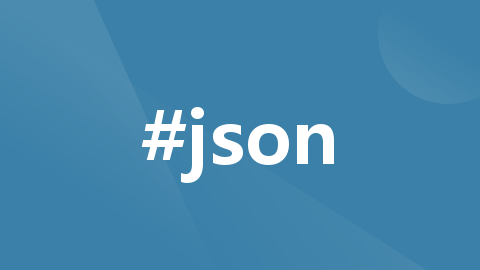springboot开发webservice服务端,发布多个webservice服务案例(带你玩转webservice)
webservice
·
一、情况说明:
本篇是对 springboot开发webservice服务端和客户端代码 的补充
效果:

二、服务端代码:
WebServiceDemo 代码:
package com.test.springboot.service;
import javax.jws.WebMethod;
import javax.jws.WebParam;
import javax.jws.WebService;
@WebService(name = "WebServiceDemo", targetNamespace = "http://server.webservice.example.com")
public interface WebServiceDemo {
@WebMethod
String emrService(@WebParam String data);
@WebMethod
String emrServiceTwo(@WebParam String data);
}
WebServiceDemoImpl 代码:
package com.test.springboot.service.impl;
import com.test.springboot.service.WebServiceDemo;
import org.springframework.stereotype.Component;
import javax.jws.WebService;
@Component
@WebService(name = "WebServiceDemo", targetNamespace = "http://server.webservice.example.com",
endpointInterface = "com.test.springboot.service.WebServiceDemo")
public class WebServiceDemoImpl implements WebServiceDemo {
@Override
public String emrService(String data) {
if(null == data || "".equals(data.trim())){
return "传入的参数为空";
}
return "调用成功,data:"+data;
}
@Override
public String emrServiceTwo(String data) {
if(null == data || "".equals(data.trim())){
return "传入的参数为空";
}
return "调用成功Two,data:"+data;
}
}
WebServiceDemoTwo 代码:
package com.test.springboot.service;
import javax.jws.WebMethod;
import javax.jws.WebParam;
import javax.jws.WebService;
@WebService(name = "WebServiceDemoTwo", targetNamespace = "http://server.webservice.example.com")
public interface WebServiceDemoTwo {
@WebMethod
String emrServiceThree(@WebParam String data);
@WebMethod
String emrServiceFour(@WebParam String data);
}
WebServiceDemoTwoImpl 代码
package com.test.springboot.service.impl;
import com.test.springboot.service.WebServiceDemoTwo;
import org.springframework.stereotype.Component;
import javax.jws.WebService;
@Component
@WebService(name = "WebServiceDemoTwo", targetNamespace = "http://server.webservice.example.com",
endpointInterface = "com.test.springboot.service.WebServiceDemoTwo")
public class WebServiceDemoTwoImpl implements WebServiceDemoTwo {
@Override
public String emrServiceThree(String data) {
return null;
}
@Override
public String emrServiceFour(String data) {
return null;
}
}
WebServiceConfig 代码[重点学习]
package com.test.springboot.config;
import com.test.springboot.service.WebServiceDemo;
import com.test.springboot.service.WebServiceDemoTwo;
import org.apache.cxf.Bus;
import org.apache.cxf.bus.spring.SpringBus;
import org.apache.cxf.jaxws.EndpointImpl;
import org.apache.cxf.transport.servlet.CXFServlet;
import org.springframework.beans.factory.annotation.Autowired;
import org.springframework.beans.factory.annotation.Qualifier;
import org.springframework.boot.web.servlet.ServletRegistrationBean;
import org.springframework.context.annotation.Bean;
import org.springframework.context.annotation.Configuration;
import javax.xml.ws.Endpoint;
@Configuration
public class WebServiceConfig {
@Autowired
private WebServiceDemo serverServiceDemo;
@Autowired
private WebServiceDemoTwo serverServiceDemoTwo;
/**
* Apache CXF 核心架构是以BUS为核心,整合其他组件。
* Bus是CXF的主干, 为共享资源提供一个可配置的场所,作用类似于Spring的ApplicationContext,这些共享资源包括
* WSDl管理器、绑定工厂等。通过对BUS进行扩展,可以方便地容纳自己的资源,或者替换现有的资源。默认Bus实现基于Spring架构,
* 通过依赖注入,在运行时将组件串联起来。BusFactory负责Bus的创建。默认的BusFactory是SpringBusFactory,对应于默认
* 的Bus实现。在构造过程中,SpringBusFactory会搜索META-INF/cxf(包含在 CXF 的jar中)下的所有bean配置文件。
* 根据这些配置文件构建一个ApplicationContext。开发者也可以提供自己的配置文件来定制Bus。
*/
@Bean(name = Bus.DEFAULT_BUS_ID)
public SpringBus springBus() {
return new SpringBus();
}
/**
* 此方法作用是改变项目中服务名的前缀名,此处127.0.0.1或者localhost不能访问时,请使用ipconfig查看本机ip来访问
* 此方法被注释后, 即不改变前缀名(默认是services), wsdl访问地址为 http://127.0.0.1:8080/services/ws/api?wsdl
* 去掉注释后wsdl访问地址为:http://127.0.0.1:8080/soap/ws/api?wsdl
* http://127.0.0.1:8080/soap/列出服务列表 或 http://127.0.0.1:8080/soap/ws/api?wsdl 查看实际的服务
* 新建Servlet记得需要在启动类添加注解:@ServletComponentScan
*
* 如果启动时出现错误:not loaded because DispatcherServlet Registration found non dispatcher servlet dispatcherServlet
* 可能是springboot与cfx版本不兼容。
* 同时在spring boot2.0.6之后的版本与xcf集成,不需要在定义以下方法,直接在application.properties配置文件中添加:
* cxf.path=/service(默认是services)
*/
// @Bean
// public ServletRegistrationBean dispatcherServlet() {
// return new ServletRegistrationBean(new CXFServlet(), "/aaa/*");
// }
@Bean
public ServletRegistrationBean newServlet() {
return new ServletRegistrationBean(new CXFServlet(), "/aaa/*");
}
@Bean
@Qualifier("sBEASEASImportClaimChannelServiceInfoSrv")
public Endpoint endpoint() {
EndpointImpl endpoint = new EndpointImpl(springBus(), serverServiceDemo);
endpoint.publish("/bbb");
return endpoint;
}
@Bean
@Qualifier("sBEASEASImportClaimChannelServiceInfoSrx")
public Endpoint endpointTwo() {
EndpointImpl endpoint = new EndpointImpl(springBus(), serverServiceDemoTwo);
endpoint.publish("/ccc");
return endpoint;
}
}
需要注意的一点:
@Bean
public ServletRegistrationBean newServlet() {
return new ServletRegistrationBean(new CXFServlet(), "/aaa/*");
}
上面这块代码,决定了访问的一级路径,可以通过代码配置多个一级路径
http://localhost:8080/aaa/
这个也可以通过配置来实现,但是,找个方式只能配置1个一级路径

三、客户端调用代码
package com.test.springboot.webservice;
import org.apache.cxf.endpoint.Client;
import org.apache.cxf.jaxws.endpoint.dynamic.JaxWsDynamicClientFactory;
public class WebServiceTest {
public static void main(String[] args) {
String url1 = "http://localhost:8080/test/bbb?wsdl";
String url2 = "http://localhost:8080/test/ccc?wsdl";
// client2(url2);
client1(url1);
}
// 创建动态客户端
public static void client1(String url) {
JaxWsDynamicClientFactory dcf = JaxWsDynamicClientFactory.newInstance();
Client client = dcf.createClient(url);
Object[] objects = new Object[0];
try {
// invoke("方法名",参数1,参数2,参数3....);
objects = client.invoke("emrService", "zhangsan123456");
System.out.println("emrService返回数据:" + objects[0]);
client.destroy();
} catch (Exception e) {
e.printStackTrace();
}
}
// 创建动态客户端
public static void client2(String url) {
JaxWsDynamicClientFactory dcf = JaxWsDynamicClientFactory.newInstance();
Client client = dcf.createClient(url);
Object[] objects = new Object[0];
try {
// invoke("方法名",参数1,参数2,参数3....);
objects = client.invoke("emrServiceThree", "zhangsan789");
System.out.println("emrServiceThree返回数据:" + objects[0]);
client.destroy();
} catch (Exception e) {
e.printStackTrace();
}
}
}
总结:
1、路径
这里的访问路径的关系梳理:
http://localhost:8080/test/ccc?wsdl
test是一级路径,通过配置文件配置,cxf.path。一个web工程只能配置1个。
如果用@Bean方式注入,则可以实现多个1级路径的配置。
@Bean
public ServletRegistrationBean newServlet() {
return new ServletRegistrationBean(new CXFServlet(), "/aaa/*","/aaaa/*");
}
ccc是二级路径,这个和endpoint有关,可以有多个,通过CxfConfig向springboot容器中注入多个Endpoint即可,每个endpoint对应一个二级路径。
这个Bean的注入,是关联到具体的service和serviceImpl的。
2、客户端调用
客户端调用时,确定访问路径后,我们调用时,要指定具体的方法名,可以直接在页面上看到。
这样,就可以向具体的方法发起请求了。
跟多的客户端调用案例参考:
https://blog.csdn.net/Brave_heart4pzj/article/details/126838003
更多推荐
 已为社区贡献15条内容
已为社区贡献15条内容









所有评论(0)